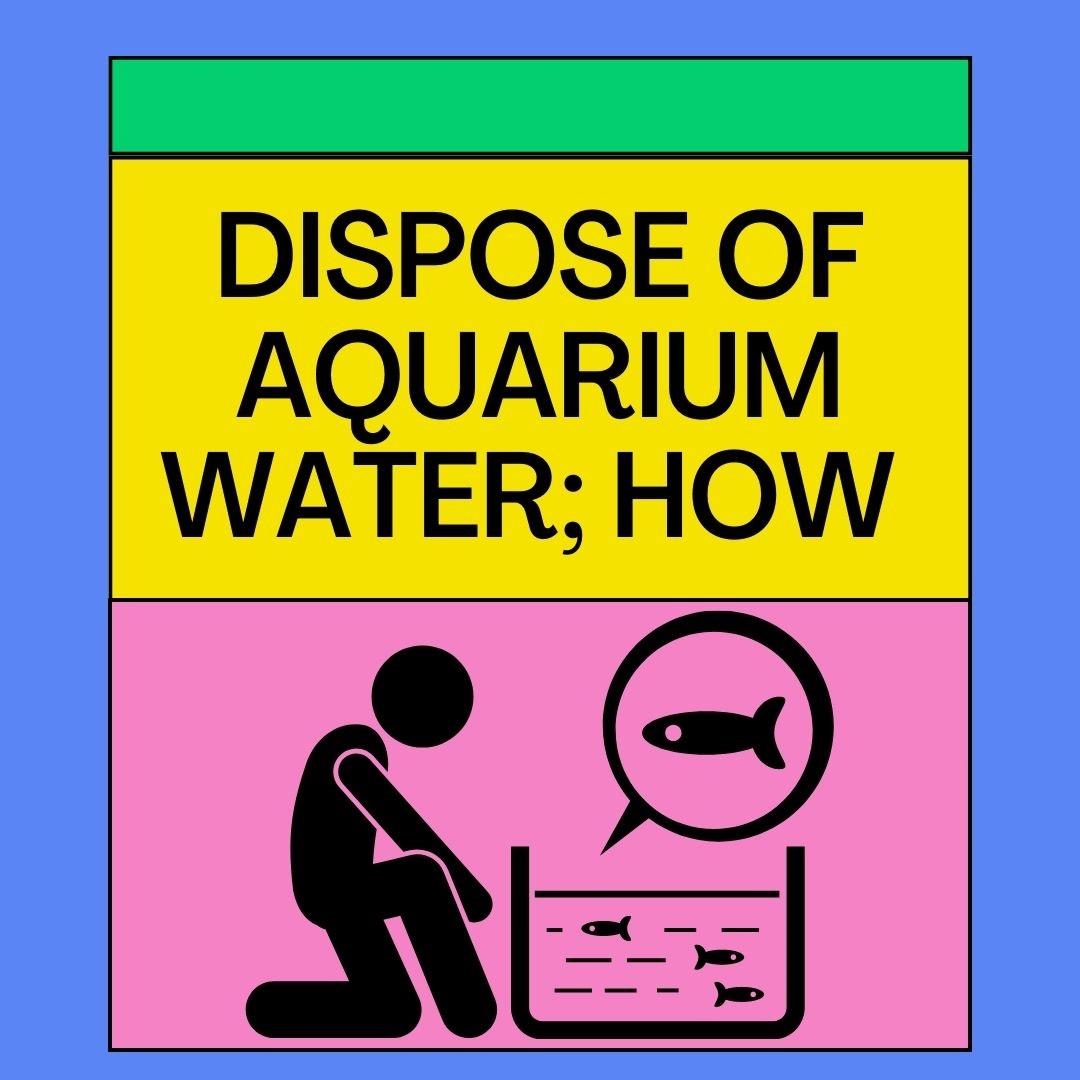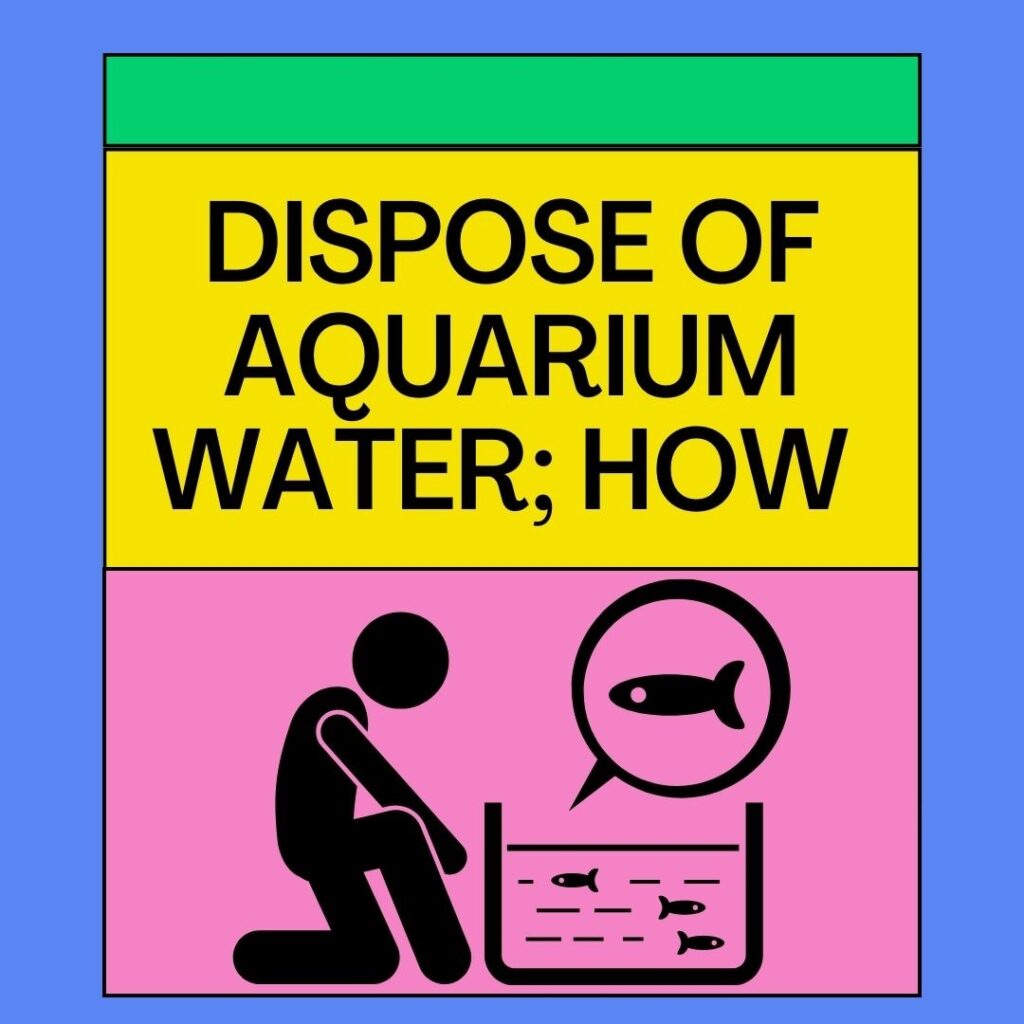
The water should be changed and disposed of properly to improve the fish’s quality of life. For beginners, not understanding the procedure for disposing of water could cause confusion and complications.
I’ll walk you through all of it step-by-step on how to dispose of aquarium water.
First, get a siphon, a bucket, and a selection of rubber gloves. Then, place the siphon’s one end inside the tank. The flow will then begin when you begin sucking the other end. Continue the technique until the aquarium is empty. Last but not least, correctly pour the water into the designated area.
It was only meant to offer you a general notion of how to get rid of it. To learn more, including where and how to discard, you must read the complete article.
Read away!
How To Dispose Of Aquarium Water
Before discussing how aquarium water can be disposed of, one must first understand the reason. Knowing why to dispose of aquarium water will encourage you to do it frequently.
Aquarium water can get contaminated with debris and chemicals over time. Regular water changes will maintain the water hygienic and beneficial for your fish.
Take your fish out from the aquarium as soon as possible if you think they are ill. It would stop the disease from spreading.
Additionally, if any of your fish have perished, it’s vital to remove their corpses from the water. It would stop the water from getting contaminated.
Before disposing of the water, you have to figure out where you want to sell your fish. It would help you ensure the betterment of the fish.

Freshwater Aquarium
Being able to support the majority of aquarium fish makes it the most prevalent type. Therefore, understanding how to dispose of this kind of water would be helpful.
Step 1: Gathering The Supplies
Gathering supplies will be your first step in the process. A variety of rubber gloves, a siphon, and a bucket are required. Keeping a garbage bag or bucket is also a smart idea.
Step 2: Siphoning The Water To A Bucket
The water in your aquarium needs to be siphoned off next. To begin, insert one siphon end into the tank and the other into the bucket.
Afterwards, begin sucking on the aquarium’s end to turn on the siphon. When the water starts to flow, it won’t stop until you unplug the bucket’s end.
Once the bucket is full enough, you may halt the siphon. After that take it out of the water of the aquarium.
The bucket can then be thrown away wherever that is appropriate, such as a drain.
Saltwater Aquarium
It cannot be disposed of the same way as freshwater aquariums due to its salt. You must dispose of it using a whole separate procedure because of this.
Step 1: Gathering And Using Supplies
This procedure is identical to how freshwater is disposed of. You’ll need to gather all the necessary tools for that process along with a trash bin.
Similar to the previous process, you’ll have to put the siphon into the aquarium. Keep it turned on until all the water is shifted from the aquarium.
Step 2: Disposing Of The Salt From The Aquarium
There would be some salt left behind once all the water had been disposed of. which were unable to move as the water was poured into the bucket.
It must be physically scrubbed off with a brush and placed in a bag. You’ll need to properly wash it with water to get rid of all of the salt. Then fill the bucket with that water. After that, pour it into the plants.
Chemical Added Aquarium
The disposal of freshwater and this method are fairly identical.
Step 1: Collecting Supplies and Using Siphon
In order to complete this process, you must first gather all required supplies. Afterwards, use the siphon to dispose of all the water in the bucket. By using the method given above, you can accomplish that.
Step 2: Diluting The Water
Because the water contains chemicals, it is hazardous to pour it anyplace. In order to make the environment safer, we must first lower the chemical content.
To accomplish that, add a gallon of fresh water to the bucket of chemically mixed water. Then, we won’t have to worry about damaging the environment when we put it in the drain.
A siphon is required for all of the approaches. For your convenience, I have listed a handful of the top-rated siphons.
| Product Name | Image | Price |
| GasTapper Siphon | $25.49 | |
| Luigi’s Siphon Pump | $12.99 | |
| KATUMO Siphon | $10.99 |
Where To Dispose Of Aquarium Water
It would be relatively simple for an individual to dispose of water by themselves. Only if they adhered to what was described in the preceding section.
However, a few things need to be kept in mind. It’s crucial to understand where to dispose of the water-filled bucket after use.
One may dispose of freshwater anywhere, such as down the toilet or drain, into a plant. It wouldn’t offer any additional advantages or risks over normal water.
Saltwater can be poured into the drain. But due to it containing Ammonia, Nitrate, and Phosphate, it has some uses.
On one hand, it can be used as a fertilizer for your plants. On the other hand, it damages the weed’s roots that eventually kills them. Therefore, pouring it accordingly can be quite beneficial for the plants.
Finally, immediately after the following suction, chemical water must never be put into the drain. Prior to making it less hazardous to the environment, we must lower the concentration.
For that, we need to dilute it with additional water. Then and only then would it be secure enough to pour down the drain.
Can You Recycle Aquarium Water?
Reusing aquarium water can be beneficial for a variety of reasons. You might reside somewhere with little access to water. Additionally, there could be a shortage of water that is unsuitable for adding several chemicals.
Now the question is can you recycle the already-used water?
Yes, you can. But first, you have to remove the nitrates waste from the water.
Get a holding tank first, and fill it with rocks, gravel, sand, and charcoal. Later, add various filter plants to it, which would intake the nitrates. Lastly, keeping the flow of water going would help the filtration process.
Then you’ll be able to reuse that water. By using the same process, you can use water from another aquarium. After the process, you can add your fish to the aquarium.
FAQs
Can I Reuse The Water From My Old Tank?
Water from the other tank cannot be used to cycle a fish tank. The helpful bacteria don’t exist inside the water of such a cycled aquarium. However, you can cycle a fresh fish tank using filter material from a previously cycled aquarium.
Are Plants Safe For Aquarium Water?
Without ever fertilizing your plants, you can water them with aquarium water. Aquarium water may need to be changed frequently for it to work as a fertilizer.
Is Warm Tap Water Suitable For My Fish Tank?
As long as you clean the tap water before putting it in the tank, it is entirely safe for your fish. You have two options: collect it and let the chlorine leave naturally or boil it to quicken the process.
Conclusion
There’s nothing more left to say regarding how to dispose of aquarium water.
It would be safer for the fish if the water was disposed of after four weeks. Water recycling is reasonable and beneficial to the environment.
Hope you’re able to now get rid of the water on your own.
Good day!
